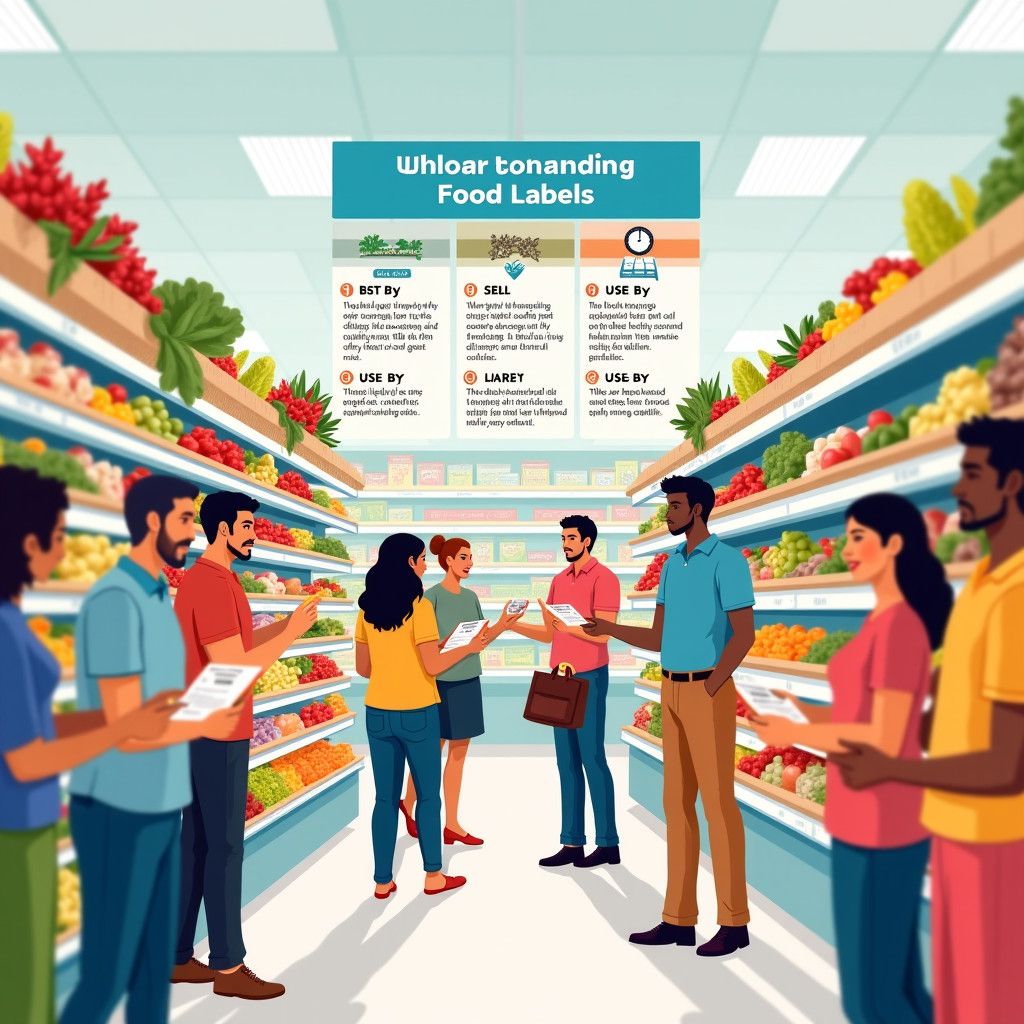In a bid to reduce food waste and improve consumer understanding, federal agencies are taking action to clarify food date labeling. The Food Safety Date Labeling Act, introduced in May 2023, has not yet made significant progress in Congress. However, the U.S. Food and Drug Administration (FDA) and the U.S. Department of Agriculture (USDA) have launched a joint Request for Information (RFI) to gather insights on consumer perceptions and industry practices regarding food date labeling.
Current date labeling practices can create considerable confusion for consumers. Terms like “Sell by,” “Use by,” and “Best by” often lead shoppers to discard perfectly edible food, contributing to an estimated 20% of food waste occurring at the consumer level. According to Jim Jones, the FDA Deputy Commissioner for Human Foods, “The information collected will help us understand consumers’ perception of terms like ‘Sell By,’ ‘Use By,’ and ‘Best By’.” This inquiry aims to gather actionable data to create a clearer understanding, enabling individuals to make informed decisions about food safety and reducing unnecessary waste.
The confusion surrounding date labels is not just a consumer inconvenience; it represents a broader issue in food waste management. The USDA, FDA, and the U.S. Environmental Protection Agency released a National Strategy for Reducing Food Loss and Waste in June 2023, recognizing date labeling as a critical factor in this ongoing challenge. The RFI is an opportunity for stakeholders, including consumers and food producers, to provide feedback on how current labels affect their purchasing and consumption habits.
The FDA and USDA currently advise food manufacturers to voluntarily adopt the “Best if Used By” label, which indicates when a food product might begin to lose freshness but does not necessarily mean it is unsafe to consume. Despite this recommendation, companies are still permitted to use other language as long as it is “truthful and not misleading.” This has resulted in an array of terminology with varying meanings, leaving consumers uncertain and often inclined to err on the side of caution by disposing of food items prematurely.
As part of its initiative, the FDA and USDA hope to establish a standard language that would simplify these varying terms. Dr. Emilio Esteban, USDA Under Secretary for Food Safety, emphasized the need to better understand how these labels are determined and their impact on consumer behavior. “Food labels contain a wealth of information for consumers, including a food product’s ‘best if used by’ date,” he stated. “Through this Request for Information, we hope to learn more about how those date labels are determined and whether they confuse consumers and lead to needless food waste.”
California has already taken steps to standardize food date labels at the state level. Governor Gavin Newsom signed legislation banning the use of “Sell by” dates and requires that dates be presented in a standardized format effective July 1, 2026. This move may serve as a benchmark for federal regulations in the future, enabling a cohesive strategy across the nation that prevents further consumer confusion.
In the broader context of marketing and consumer behavior, these labeling adjustments highlight the growing expectation for transparency and clarity in the food industry. Clear labeling can lead to better consumer trust, promoting the sale of products and reducing waste. For example, when brands communicate effectively about food safety, not only do they position themselves as responsible entities, they also educate consumers on how to make better food choices.
Furthermore, technological advancements could aid in this reformation. Apps that scan barcodes and provide instant information on food safety dates, freshness tips, and recipes for overripe produce could further empower consumers to make informed decisions. Retailers can capitalize on these trends by integrating technology into purchasing experiences, thus further educating their customers and minimizing wastage.
The RFI serves as a critical step for both the FDA and USDA on their mission to enhance food safety and reduce wastefulness in the culinary supply chain. By aligning strategies and incorporating consumer insights, these efforts could lead to meaningful regulations that resonate with stakeholders across the board. A clearer understanding of food labeling is not merely a regulatory concern; it embodies a shift towards a more sustainable and responsible food culture.
In conclusion, the FDA and USDA’s request for information provides an invaluable opportunity for both consumers and producers to engage in a meaningful dialogue. The outcome of this inquiry will likely shape future food labeling standards, potentially improving public understanding and reducing waste in the long term. As businesses and consumers join forces, the path toward clarity in food date labeling can pave the way for a more sustainable food system.
